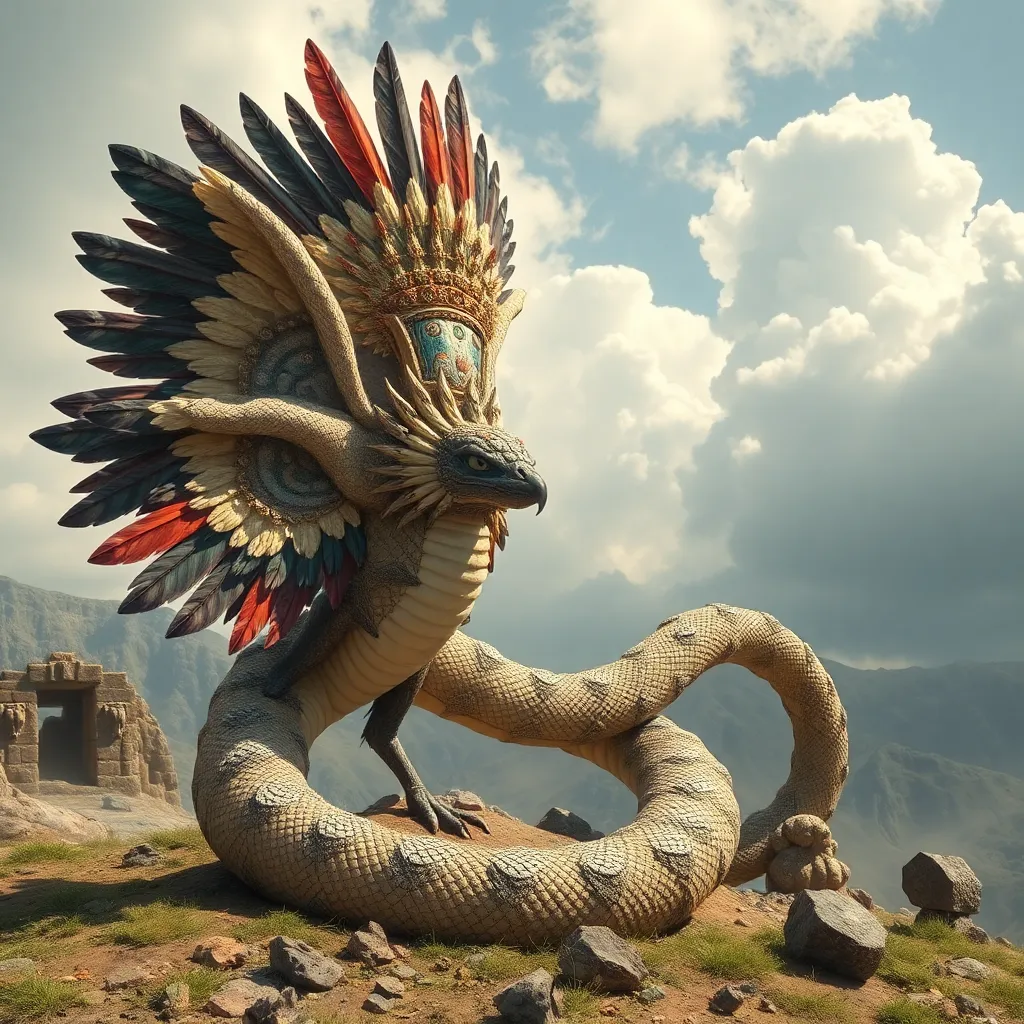The Feathered Serpent and the Spirit of the Wind: Quetzalcoatl’s Association with Air and Breath
Introduction
Quetzalcoatl, the Feathered Serpent, is one of the most revered deities in Mesoamerican mythology, primarily associated with the ancient civilizations of the Aztecs and the Toltecs. This complex figure embodies a myriad of attributes, including wisdom, wind, and fertility, making him a vital part of the spiritual and cultural fabric of these societies. In many cultures, air and breath are not merely physical elements; they hold profound spiritual significance, often representing life, divinity, and the essence of existence itself. This article aims to explore the intricate connections between Quetzalcoatl and the elements of air and breath, emphasizing their importance in Mesoamerican cosmology and beyond.
Mythological Origins of Quetzalcoatl
The origins of Quetzalcoatl are deeply rooted in the creation myths of Mesoamerican cultures. He is often depicted as a god who played a crucial role in the creation of humanity. According to various legends, Quetzalcoatl descended from the heavens to create life, shaping humanity from the very elements of the earth and infusing them with spirit through his breath.
The Feathered Serpent symbol itself is rich in meaning. The feathers represent the sky and the divine, while the serpent signifies the earth and its fertility. Together, they illustrate the interconnectedness of the sky and the ground, embodying the duality of existence.
Within the pantheon of Mesoamerican deities, Quetzalcoatl stands out as a god of intellect and culture, often associated with the arts, learning, and the wind. His influence permeated various aspects of life, from agriculture to the arts, making him a multifaceted figure revered by many.
Quetzalcoatl as a Deity of Air
Quetzalcoatl is frequently described with attributes that symbolize air and its qualities. He is depicted with feathers that allow him to soar through the skies, embodying the freedom and movement associated with wind. The symbolism of feathers is profound in Mesoamerican cultures, often representing transcendence and connection to the divine.
- Feathers as symbols of the sky: In many cultures, feathers are seen as a bridge between the earthly and the celestial.
- Air as a life-giving element: Wind is crucial for life, carrying seeds, dispersing pollen, and enabling growth.
When comparing Quetzalcoatl to other air deities in global mythologies, parallels can be drawn with figures such as the Greek god Aeolus or the Hindu god Vayu, both of whom embody the elements of air and the vital force of breath.
Breath in Mesoamerican Cosmology
In Mesoamerican cosmology, breath, or “tlahuilo,” is considered a sacred element. It is often associated with life itself, symbolizing the divine spark that animates beings. The connection between breath and the divine is particularly significant, as it is believed that breath is a gift from the gods, essential for existence.
Quetzalcoatl embodies this essence, serving as a reminder of the sacredness of breath. His role as a life-giving force is underscored by the belief that he breathed life into humanity, imbuing them with spirit and consciousness. This connection emphasizes the idea that breath is not merely a biological function but a profound spiritual experience.
Quetzalcoatl’s Influence on Nature and Agriculture
Quetzalcoatl’s influence extends into nature, particularly in weather patterns and agriculture. As a deity associated with wind and rain, he plays a crucial role in the fertility of the land.
- The symbolism of wind: Wind is essential for the dispersal of seeds and the pollination of plants.
- Rituals and offerings: To honor Quetzalcoatl and ensure bountiful harvests, various rituals and offerings were performed, seeking his favor for favorable weather and a fruitful growing season.
These practices highlight the deep-rooted connection between Quetzalcoatl, air, and agriculture, showcasing how spiritual beliefs directly influenced agricultural practices in ancient Mesoamerican societies.
Artistic Representations of Quetzalcoatl
Artistic representations of Quetzalcoatl abound in Mesoamerican artifacts, ranging from sculptures to pottery. These artworks often depict him with elaborate feather motifs and symbols associated with air and breath.
- Imagery of wings and feathers: These elements convey his divine nature and association with the sky.
- Symbolism in art: Artistic interpretations often reflect the duality of Quetzalcoatl as a force of creation and destruction, emphasizing his importance in the natural order.
Through these artistic expressions, the association of Quetzalcoatl with wind and breath becomes visually apparent, enriching our understanding of his multifaceted character.
Quetzalcoatl in Modern Interpretations
In contemporary culture, Quetzalcoatl’s influence persists, with modern movements seeking to reinterpret his significance in spirituality and cultural identity. As interest in ancient Mesoamerican beliefs resurfaces, Quetzalcoatl is often invoked as a symbol of wisdom, creativity, and the interconnectedness of life.
- Spiritual movements: Many contemporary spiritual practices draw inspiration from Quetzalcoatl, linking him to themes of environmentalism and sustainability.
- Resurgence of interest: The Feathered Serpent’s legacy continues to inspire artists, authors, and spiritual seekers, fostering a renewed appreciation for Mesoamerican mythology.
This modern reinterpretation underscores the enduring relevance of Quetzalcoatl and his association with air and breath in understanding our relationship with nature and spirituality.
Conclusion
Quetzalcoatl’s association with air and breath reveals the profound significance of these elements in Mesoamerican culture. As a deity who embodies the life-giving force of breath and the dynamic nature of air, Quetzalcoatl continues to resonate across time and cultures. His legacy serves as a reminder of the intricate connections between mythology, nature, and spirituality.
In reflecting on Quetzalcoatl’s enduring influence, we recognize the importance of understanding mythological connections to natural elements, as they offer valuable insights into the human experience and our place within the world.


